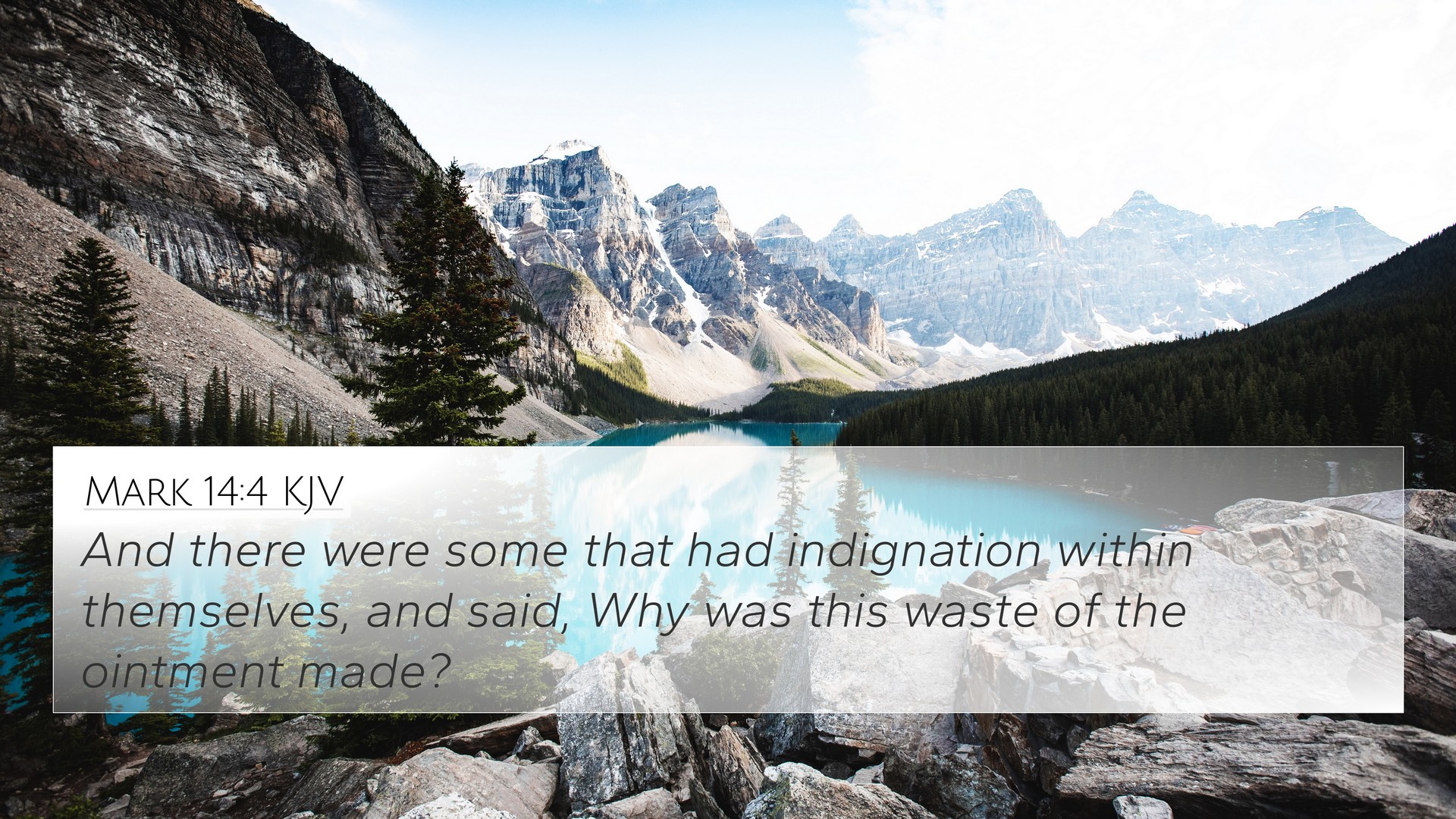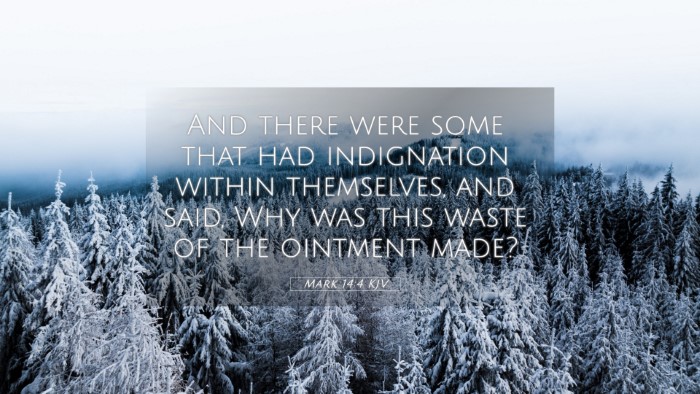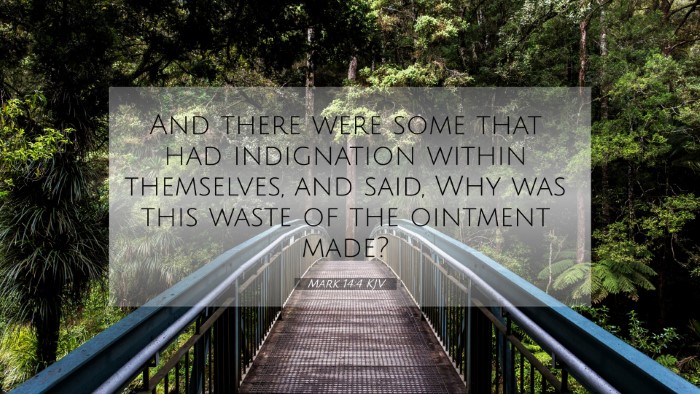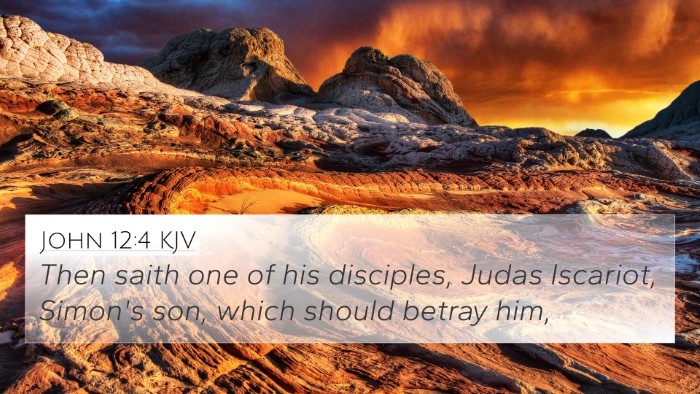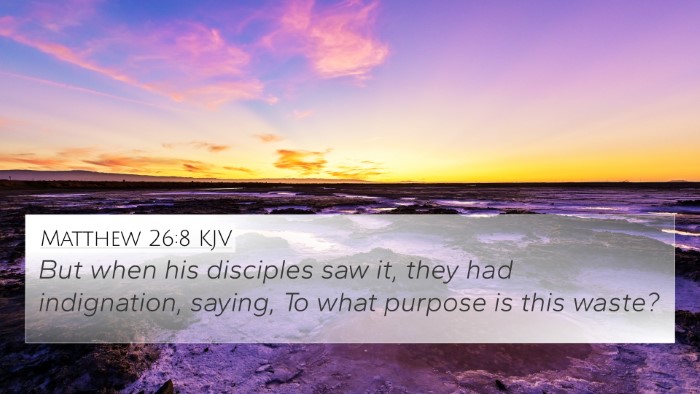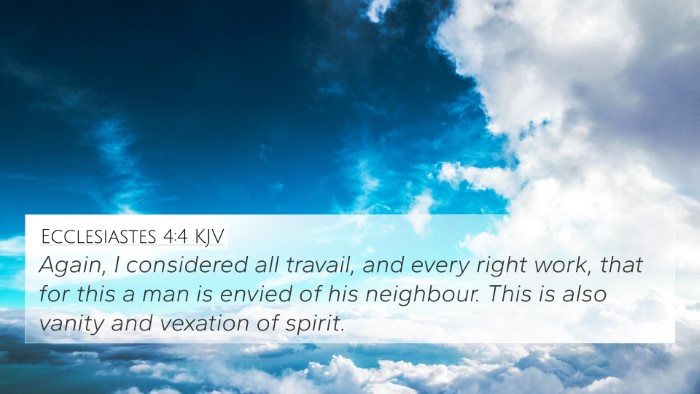Understanding Mark 14:4
In Mark 14:4, we find the reaction of some individuals to an act of devotion and generosity displayed by a woman towards Jesus. This verse states:
"And there were some that had indignation within themselves, and said, Why was this waste of the ointment made?"
Meaning and Interpretation
Mark 14:4 depicts a moment of tension as it showcases two contrasting perspectives regarding the woman's act of anointing Jesus with precious ointment. The indignation expressed by some individuals highlights themes of value, sacrifice, and the varying interpretations of acts of worship.
Insights from Public Domain Commentaries
- Matthew Henry: Henry emphasizes the misguided priorities of those who criticize the woman. He notes that they misunderstood the value of her offering, arguing that true devotion cannot be quantified by material worth but is an expression of love and reverence.
- Albert Barnes: Barnes underscores the hypocrisy of the critics, suggesting that their indignation stemmed from a lack of understanding of Jesus’ mission and sacrifice. He points out that this act was significant as it prefigured the anointing of Jesus as the Messiah, setting the stage for His crucifixion.
- Adam Clarke: Clarke offers a historical perspective, suggesting that the critics' reaction reflected a common attitude towards extravagant gifts. He emphasizes the cultural significance of anointing and connects this act to the prophetic tradition, reminding readers of the anointing in the Old Testament.
Connections with Other Bible Verses
Mark 14:4 can be cross-referenced with several verses that enhance the understanding of this narrative. Here are biblical connections and themes that resonate with this verse:
- Matthew 26:8-9: The parallel account in Matthew mirrors the indignation towards the woman’s act, reinforcing the idea of differing values in worship.
- John 12:4-6: In John’s account, Judas Iscariot specifically voices the objection, revealing motives rooted in greed.
- 1 Samuel 16:7: This verse discusses God's perspective on worth, highlighting that He looks at the heart rather than outward appearances, aligning with the theme of true worship.
- Psalm 51:17: This verse about a broken spirit ties into the genuine act of devotion seen in Mark 14:4, emphasizing that God values a contrite heart over mere offerings.
- 2 Corinthians 9:7: Paul’s exhortation on giving cheerfully parallels the understanding of the woman's heartfelt offering against the critics' transactional mindset.
- Luke 7:47: In another account of a woman anointing Jesus, Jesus explains that her many sins are forgiven as she showed great love, foreshadowing the grace offered through His sacrifice.
- Exodus 30:23-25: The command concerning anointing oil draws a direct line to the Hebrew tradition where anointing held deep spiritual significance.
Thematic Connections and Reflections
This verse encourages a deeper examination of Bible verse cross-references and connections between Bible verses regarding dignity in worship and the true value of offerings. The following themes emerge from considering Mark 14:4 alongside its cross-references:
- Value of Worship: Worship should be rooted in love for God rather than the material calculation of worth.
- Judgment vs. Grace: While some may judge acts of devotion, Christ prioritizes acceptance and grace.
- Extravagance in Worship: Different attitudes toward extravagance showcase the divide in living out faith.
- Understanding Jesus' Mission: The critics’ inability to recognize Jesus’ coming sacrifice reflects broader themes of misunderstanding in the Gospel narrative.
Tools for Further Study
To delve deeper into the meanings and connections within the Bible, consider using the following tools for Bible cross-referencing:
- Bible Concordance: A tool that helps locate words and themes across Bible texts.
- Bible Cross-reference Guide: Resources that provide relational insights between verses.
- Bible Chain References: A method to trace thematic connections through interconnected verses.
- Bible Reference Resources: Various study aids that enhance understanding through cross-references.
Conclusion
The encounter in Mark 14:4 invites a rich exploration of how acts of devotion are perceived and valued in the biblical narrative. Acknowledging the perspectives of other scripture passages provides a fuller understanding of the significance of genuine worship. By embracing tools and methods of cross-referencing Biblical texts, readers can illuminate the connections that deepen their Biblical understanding.
